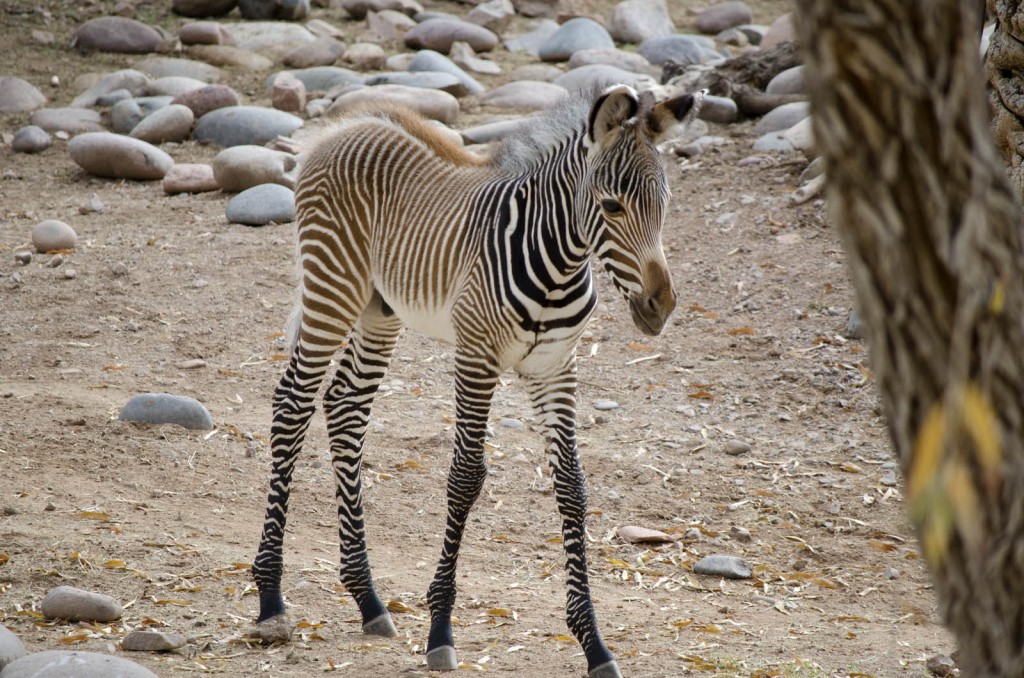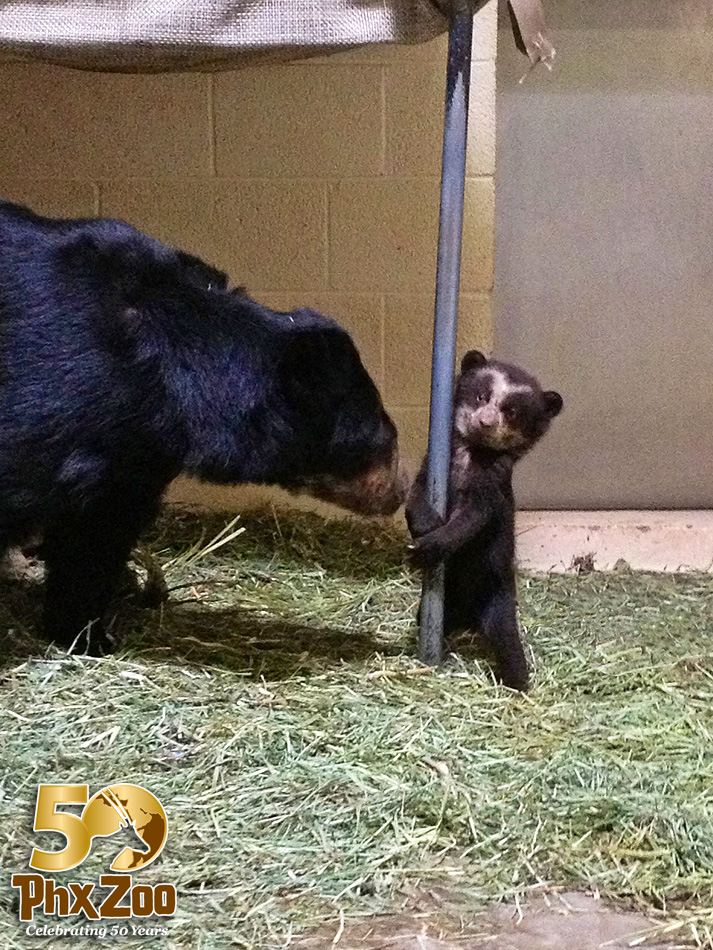By Cheryl Hurd
Leggy Grevy’s
Babies always attract attention, and it’s no different for the four-legged and furry ones at the Phoenix Zoo. The zoo has had several new additions in recent months.
Bakari, a Grevy’s zebra, with his long legs and large ears, can be seen playing in the African Trail enclosure. He weighed 100 pounds when he was born January 19. Zookeepers let his mother decide his name by attaching three name choices to three separate bags of treats. The mother chose the treats with the name Bakari, which in Swahili means “one who will succeed.”
Success is important to the Grevy’s zebras, which are on the endangered species list, meaning that they are at a very high rate of extinction in the wild. There are less than 2,500 Grevy’s zebras left in the wild, due to loss of habitat, poaching, and competition with livestock, according to the Phoenix Zoo.
They still can be found grazing in their native habitat in northern Kenya and southeastern Ethiopia in an arid and semi-arid region with grass and shrubs. Land degradation is making it increasingly difficult for the zebras to find water. While they can survive without water for five days, the mothers that are still producing milk to feed their young need water every other day. The need to travel longer distances to find water is taking its toll with an increased mortality rate for the foals, further threatening the species’ survival, according to the Grevy’s Zebra Trust, an organization dedicated to the species’ conservation.
The Phoenix Zoo is also dedicated to conserving the Grevy’s zebras, which are easily recognizable by their long legs, narrow stripes, white bellies, brown muzzles and large round ears. The zoo works with the Association of Zoos & Aquariums Species Survival Plan to map out a breeding plan that ensures a healthy, genetically diverse population for the long-term survival of the species.
Spectacled Sighting
For just a moment, the 4-month-old Andean cub tested his independence, long enough for zookeepers to snap a quick photograph. The zoo has been carefully monitoring this furry addition that is also part of a breeding plan for the Andean bears. The bears are more commonly known as spectacled bears because of their distinctive white face markings that make them appear as if they are wearing glasses. Since the baby was born in early January, mom and baby have been left undisturbed in a maternity ward away from zoo spectators. The mother, named Rio, is one of two bears in North American zoos that is reproducing. The second, named Billie Jean, is housed at the National Zoo in Washington, DC. Billie Jean has had two sets of twins since 2010. The bears are considered vulnerable by the International Union for Conservation of Nature, the world’s first and largest global environmental organization. This designation means the animals face a high risk of extinction in the wild.
Natural habitats for these bears are in the Andean jungles of South America. Fragmentation and destruction of habitat threaten the animals, according to National Geographic, as do poachers and farmers who consider them agricultural pests. There are an estimated 2,000 to 2,400 Andean bears left in the wild. You can learn about these babies and others who have been added to the Phoenix Zoo’s family by visiting the zoo at 455 N. Galvin Pkwy., in Phoenix. Since it is Mother’s Day this month, let’s celebrate the moms who brought these precious treasures into the world.
Sources: phoenixzoo.org, animals.nationalgeographic.com, iucn.org
Photos courtesy of the Phoenix Zoo.








